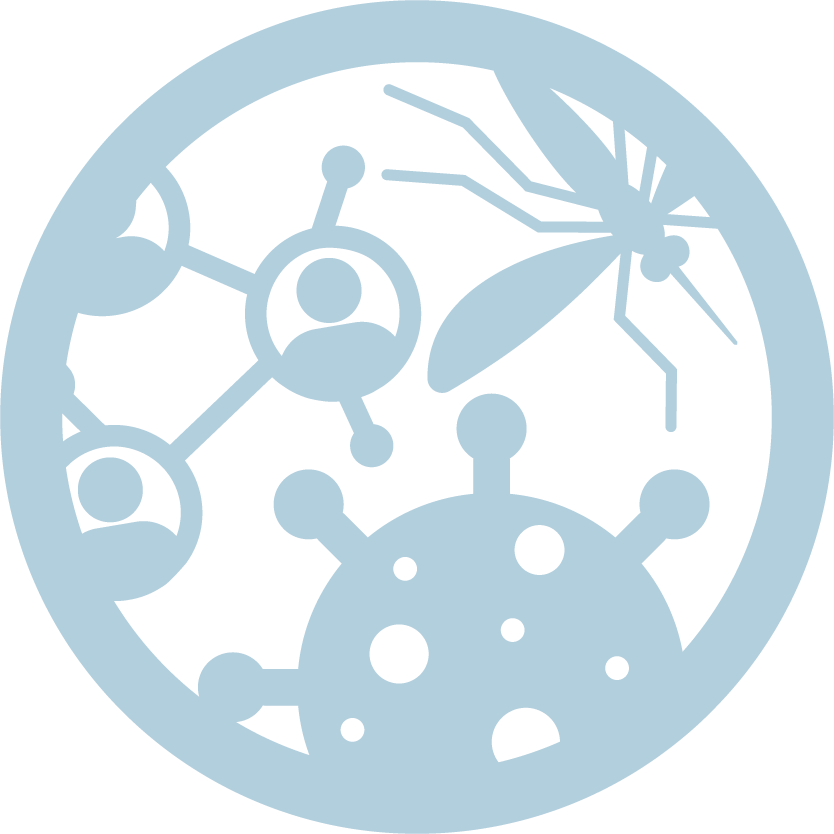Infection Prevention Orientation Manual
Section 9: Environmental Services
David R. Woodard, MSc, CLS, CIC
October 2014
Download a printable PDF Version of this section.
Objectives
At the completion of this section the Infection Preventionist (IP) will:
- List the considerations for choosing cleaning products
- List the hierarchy for cleaning and disinfection of equipment (Spaulding classification)
- List methods to evaluate the cleaning process in the healthcare environment
Number of hours
- Key Concepts – 6 hours
- Methods – 4 hours
Required Readings
- Wyoming Infection Prevention Orientation Manual, Section #8 Medical Instrument and Device Reprocessing
Overview
Environmental cleaning in the healthcare setting is one of the most often overlooked but key elements in infection prevention. The discipline is generally unseen unless there are problems. The current versions of the regulatory standards for healthcare facilities, including the Centers for Medicare and Medicaid Services (CMS), the Joint Commission and the Healthcare Facilities Accreditation Program do not have specific standards for environmental cleaning and hygiene; they are scored in the infection prevention and leadership standards. Therefore IP must be intimately involved with the development and monitoring of the environmental services (EVS) department’s activities. The entire process of cleaning should be monitored by a multi-disciplinary team of administration, infection prevention, and the EVS personnel.
Key Concepts
Dr. E. H. Spaulding classified the cleaning of medical equipment into three general levels: non-critical, semi-critical, and critical. Each of these levels in the classification system is based on the relative risk of the transmission of an infection in the healthcare setting. The plan for cleaning the healthcare environment should evolve from an assessment of the relative risk of infection based on the Spaulding classification, and then scheduled accordingly. For more information on the specifics of cleaning and disinfecting medical devices and equipment, please read the Medical Instrument and Device Reprocessing section (Section #8) of the Wyoming Infection Prevention Orientation Manual.
Proper cleaning and disinfection of the environment requires the right combination of:
- Equipment (wipes, mops, automated washers, etc.)
- Supplies (soaps, detergents, disinfectants, etc. at the correct dilutions and for the correct duration of contact time)
- Personnel (environmental services staff)
- Training (of those staff on the proper use of said equipment and supplies and compliance with facility policies)
- Monitoring (of policies and procedures related to cleaning, as well as the overall effectiveness and efficiency of cleaning).
Individuals responsible for the cleaning and disinfection of equipment and healthcare environment must receive adequate and appropriate training. Training should be conducted as part of general orientation, remediation (if there are issues or concerns identified), and re-training as products or methods change. Documentation of training should be available to the IP. There should be agreement in the policies as to what constitutes “clean” and how the process is monitored and maintained.
Methods
Check lists are invaluable in guiding and tracking the effectiveness and efficiency of cleaning and disinfection processes and procedures. The selection and methods of cleaning and disinfection are essential to a successful program.
The IP and/or EVS director are responsible for developing a cleaning matrix that includes: the frequency, the product, the responsible individual and any essential comments. The IP meets with the department heads to develop this matrix.
Exercise #1
Prepare a matrix that lists equipment, the type of detergent/disinfectant that should be used, the frequency of cleaning and disinfecting, the responsible party, and any pertinent comments related to the process. Use Table 1 to get started (Please download the printable PDF version of this section, linked at the top of the page, to view Table 1).
Wheelchairs should be assigned “owners” by department to assure their cleanliness. All “rolling stock” should be itemized in this matrix.
Documentation and Reporting
Documentation of the cleaning/disinfection process helps assure compliance. Additionally, documentation allows EVS managers and the IP to be informed when remediation is needed and to recognize EVS staff when goals are exceeded. Documentation also provides evidence for remediation and reward of met/exceeded goals. It is also used to evaluate the availability of cleaning equipment and the competency of the staff to use and clean the equipment properly. A variety of commercial methods that can be utilized to verify a particular environment is clean. These methods include fluorescent markers (Dazo®) and adenosine triphosphate biolumeninescence assay.
The use of environmental culturing as an option for cleaning evaluation has serious limitations and should only be undertaken with the assistance and support of the IP, the hospital or associated microbiology laboratory, administration, and EVS.
Exercise #2
Prepare and complete a list of equipment, an evaluation of the cleaning, and any pertinent comments related to the process in Table 2 (Please download the printable PDF version of this section, linked at the top of the page, to view Table 2). Use the check list provided by the Centers for Disease Control and Prevention (CDC) shown in the Appendix or at www.cdc.gov/HAI/toolkits/Environmental-Cleaning-Checklist-10-6-2010.pdf
Other Issues
Healthcare facilities must have a process in place to approve disinfectants, including those used by EVS, respiratory therapy, endoscopy etc. The U.S. Environmental Protection Agency (EPA) must approve all agents used in the healthcare facility. The approval for products can be found by agent on the EPA website www.epa.gov/oppad001/chemregindex.htm.
CMS regulation 42 CFR 482.42(a) recommends an annual review of all disinfecting products used by the healthcare facility be conducted by the infection prevention committee. This approval should be done based on the active ingredient as opposed to the “trade name” e.g. ortho-phthalaldehyde not Cidex OPA®. Disinfectants must be used as directed by the manufacturer. Specific product use directions and guidelines can be found on the product website. Product indications and limitations for Cidex OPA® can be found at www.aspjj.com/us/products/cidex-opa/specs#page_content. Auto-dilutors must be measured and calibrated by the manufacturer, and the results of these calibration activities documented and available; both internally (as by the IP) and externally (as by healthcare licensing).
Exercise #3
Perform a survey of your facility to determine what disinfectants, cleansers and detergents are currently in use. List each agents’ trade name, active ingredient, proper dilution and whether or not the dilution has been verified to be accurate and according to manufacturer’s instructions.
The director of Environmental Services and the IP should review findings of the cleaning evaluations, new concepts or techniques. The EVS director is an essential member of the Infection Prevention Committee and should attend all meetings.
Exercise #4
Schedule a meeting with your EVS director to review the contents of this section and meet regularly.
Resources
Helpful/Related Readings
- Rutala W, Weber DJ, et al. Guideline for Disinfection and Sterilization in Healthcare Facilities, 2008. Centers for Disease Control and Prevention. 2008. Available at: cdc.gov/hicpac/pdf/guidelines/Disinfection_Nov_2008.pdf.
- Guh A, Carling P, et al. Options for Evaluating Environmental Cleaning. Centers for Disease Control and Prevention. 2010. Available at: cdc.gov/HAI/pdfs/toolkits/Environ-Cleaning-Eval-Toolkit12-2-2010.pdf.
- Carling P, Parry MM, Rupp ME, et al. Improving cleaning of the environment surrounding patients in 36 acute care hospitals. Infection Control and Hospital Epidemiology 2008; 29:11, 1035-1041.
- Boyce J, Havill NL, Lipka A, Havill H, Rizvani R. Variations in hospital daily cleaning practices. Infection Control and Hospital Epidemiology 2010; 31, 1:99-101.
- Grota P, Allen V, Boston KM, et al, eds. APIC Text of Infection Control & Epidemiolo 4th Edition. Washington, D.C.: Association for Professionals in Infection Control and Epidemiology, Inc.; 2014.
- Chapter 31, Cleaning, Disinfection, and Sterilization, by WA Rutala and DJ Weber
- Chapter 107, Environmental Services, by T Chou
- Chapter 111, Laundry, Patient Linens, Textiles, and Uniforms, by C McLay
- Chapter 113, Waste Management, by WJ Pate
- Bennett J and Brachman P, eds. Bennett & Brachman’s Hospital Infection 6th Edition. Philadelphia, PA: William R Jarvis; 2014.
- Chapter 19, The Inanimate Environment, by JM Boyce
- Chapter 20, Disinfection and Sterilization in Healthcare Facilities, by WA Rutala and DJ Weber
- Bennett G, Morrell G and Green L, ed. Infection Prevention Manual for Hospitals; revised edition. Rome, GA: ICP Associates, Inc.; 2010.
- Section 6: pages 6-7 and 23-24
- Section 10, pages 1-32.
- Bennett G. Infection Prevention Manual for Ambulatory Care. Rome, GA: ICP Associates Inc.; 2009. Section 7, pages 6-9, and 12-14.
- Bennett G and Kassai M. Infection Prevention Manual for Ambulatory Surgery Centers. Rome, GA: ICP Associates, Inc.; 2011.
- Section 6: pages 8-14, 20-26, 27-28, 43-46
- Section 7, pages 11-17
- Section 11, pages 12-13, 16-17.
- Schweon S, Burdsall D, Hanchett M, et al. Infection Preventionist’s Guide to Long-Term Care. Washington, D.C.: Association for Professionals in Infection Control and Epidemiology, Inc.; 2013.
- Chapter 10, Environment and Equipment, by D Green and SJ Schweon
- Code of Federal Regulations, specifically 40 CFR 152. Available at: ecfr.gov/cgi-bin/text-idx?tpl=/ecfrbrowse/Title40/40cfr152_main_02.tpl
- Code of Federal Regulations, specifically 40 CRF 455. Available at: ecfr.gov/cgi-bin/text-idx?SID=db5bce30144eaaacf0b976fbf1ebd46d&node=pt40.30.455&rgn=div5
- Mayhall CG ed. Hospital Epidemiology and Infection Control (4th Edition). Philadelphia, PA: Lippincott Williams & Wilkins, a Wolters Kluwer business; 2011.
- Chapter 71, Healthcare-Associated Infections and the Environment, by AJ Streifel
- Chapter 72, Microbiologic Sampling of the Environment in Healthcare Facilities, by LM Sehulster, LJ Rose, J Novle-Wang
- Chapter 80, Selection and Use of Disinfectants in Healthcare, by WA Rutala and DJ Weber
Helpful Contacts (in WY or US)
- David Woodard, Contractor in healthcare environmental services, dwood1492@gmail.com, 702-686-7823
- Baerbel Merrill, MS, BSN, CIC, Infection Preventionist, baerbel.merrill@ccmh.net, 307-698-3942
Related Websites/Organizations
- Centers for Disease Control and Prevention (CDC): cdc.gov
- S. Environmental Protection Agency (EPA): www.epa.gov/
- National Institute for Occupational Safety and Health (NIOSH): cdc.gov/niosh/
- Association for the Healthcare Environment (AHE; part of the American Hospital Association): ahe.org/
My Facility/City/County Contacts in this Area
Develop a list with the name, contact number, and email of the Director of Environmental Services, Infection Prevention Committee Lead, and Infection Prevention Committee members.
Disclaimer
The products and methods mentioned in this section are provided as examples, not as endorsements.
Appendix
CDC Environmental Services Cleaning Checklist. For the most current version, please visit https://www.cdc.gov/HAI/toolkits/Environmental-Cleaning-Checklist-10-6-2010.pdf

WIPAG welcomes your comments and feedback on these sections.
For comments or inquiries, please contact:
Cody Loveland, MPH, Healthcare-Associated Infection (HAI) Prevention Coordinator
Infectious Disease Epidemiology Unit,
Public Health Sciences Section, Public Health Division
Wyoming Department of Health
6101 Yellowstone Road, Suite #510
Cheyenne, WY 82002
Tel: 307-777-8634 Fax: 307-777-5573
Email: cody.loveland@wyo.gov

